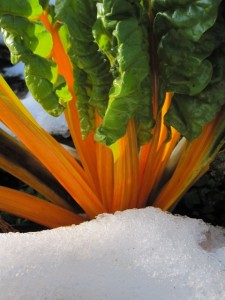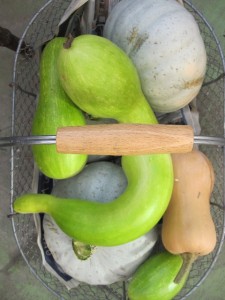As snow brings chaos to man’s world so it brings panic to that of the wildlife, cutting off herbivore’s food source, freezing their drinking water, stripping away camouflage. But beneath the blanket of snow all is going to plan; bulbs prepare for spring unhindered, rhubarb crowns, annuals, biennials and fruit trees magically clock up their required number of ‘cold units’ before they will break winter dormancy (known as vernalization). It is a time of year where growth hormones are triggered by cold ensuring a season of flowers and fruit during the year ahead.
The snow will melt and the birds will find food again, they will build their nests, raise their broods, feed off juicy ‘spring’ insects but for those of us who like to grow our own food, we will be in the midst of what is known as ‘the hungry gap’.
I spent the last growing season producing vegetables both for summer consumption but also to store for the winter, for example: parsnips, carrots, celeriac, potatoes, squash, onions, beans, leeks, beetroot, brassicas, garlic, salads… Now at the end of January the onions, garlic and potatoes are beginning to sprout, the squash are deteriorating, the salads are thinking about bolting (flowering) and due to my negligence the pigeons discovered the brassicas whilst all else was covered in snow. From now until May is known as the ‘hungry gap’ when there will be very little fresh produce in the vegetable plot.
I still have the hen’s eggs and I am lucky there is produce in the freezer but I will have to buy additional vegetables. I am lucky too that I do not have to rely on my garden 100% however I do find it extremely rewarding growing my own food and can’t wait to start growing again – the first seeds will be going in next month!

